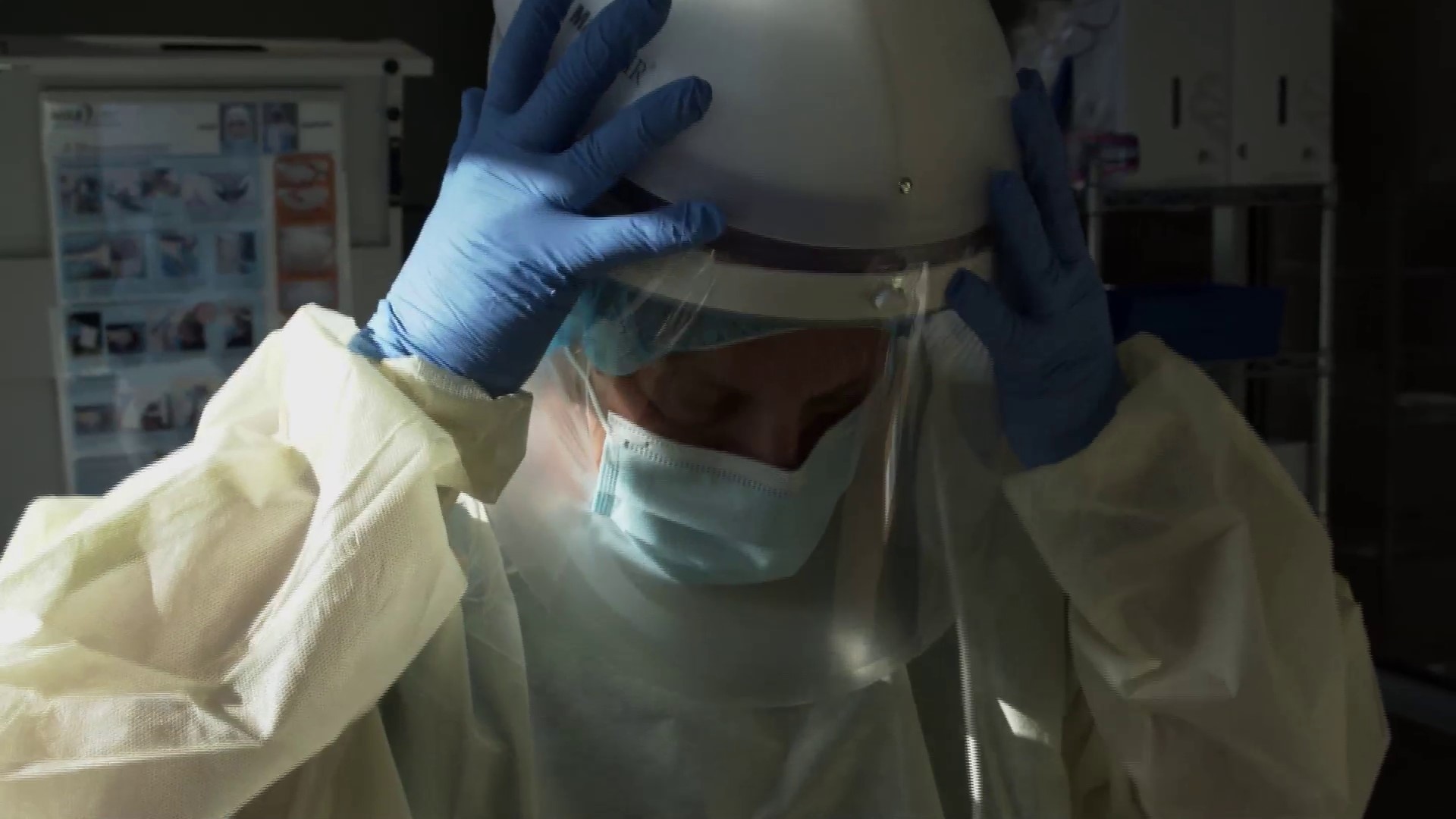'My wife had it, and I pray to God that she doesn't get it again' | COVID-19 runs rampant across Williams County
Health officials are pleading for help, as they say the county's low vaccination rate is driving up cases.
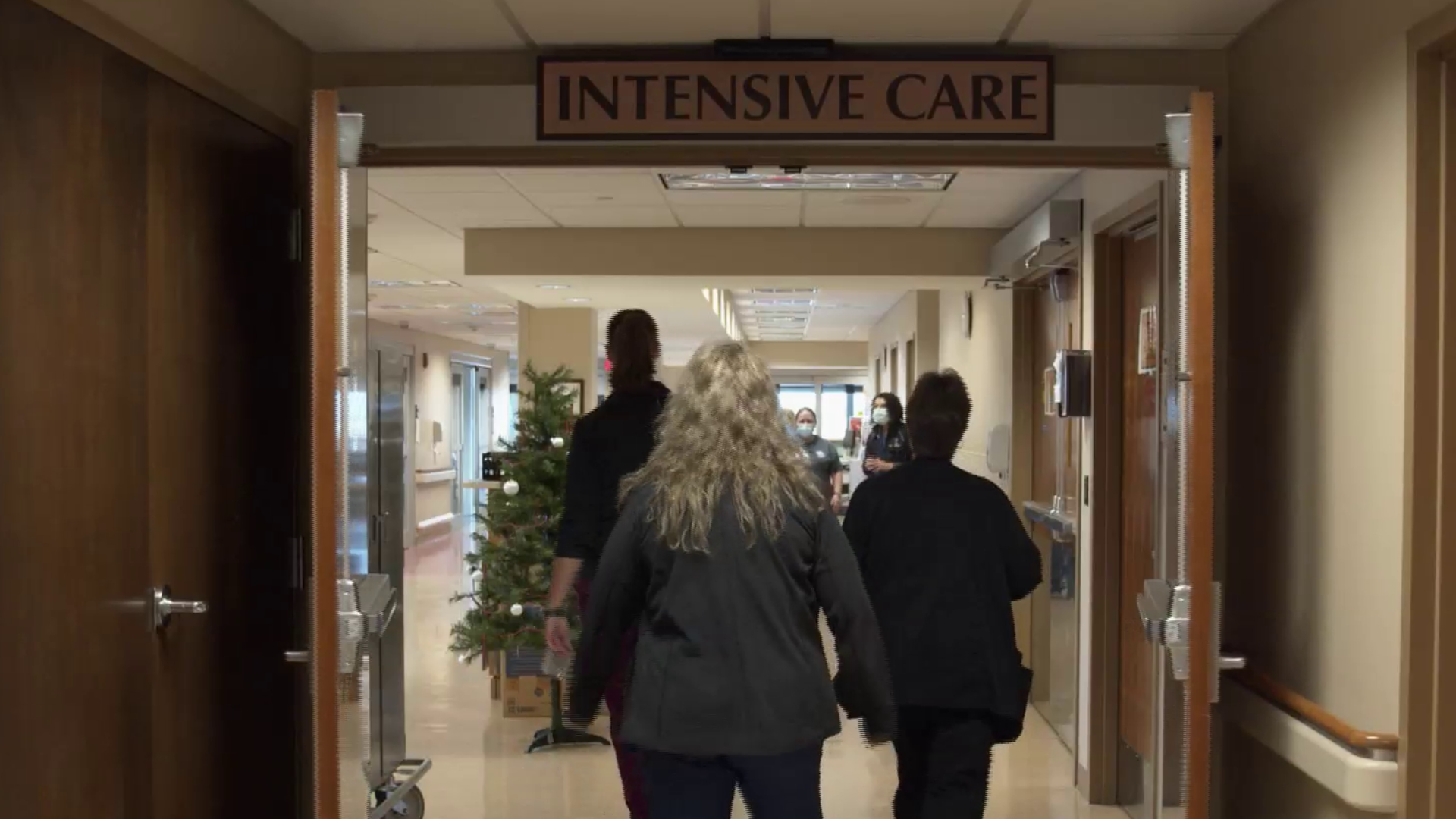
A drive through rural Williams County reveals empty farm fields, long-ago harvested for the fall.
There are "Save Our Water" signs dotting some yards, a call to action in a fight against an aquifer project.
American flags flap in the stiff northwest Ohio breeze; some of the poles still fly "Trump....Keep America Great" flags. On one pole, a "Let's Go Brandon" banner stretches out in the wind, a political statement aimed at President Joe Biden.
This is squarely Republican country. Former President Donald Trump won 72% of the vote in 2020 in Williams County. Some residents will tell you their land is in the heartland of America.
Numbers tell you that the region is the heartland of the COVID-19 pandemic.
A POLITICAL DIVIDE
Williams County has led the state of Ohio in COVID-19 incidence rates for three straight weeks. The virus has run rampant through northwest Ohio communities over the last month. While some counties have seen their numbers retreat slightly, the numbers continue to rise in Williams County.
The county is now at a rate of 1,134 per 100,000 during the last two weeks, more than 11 times the rate of high incidence.

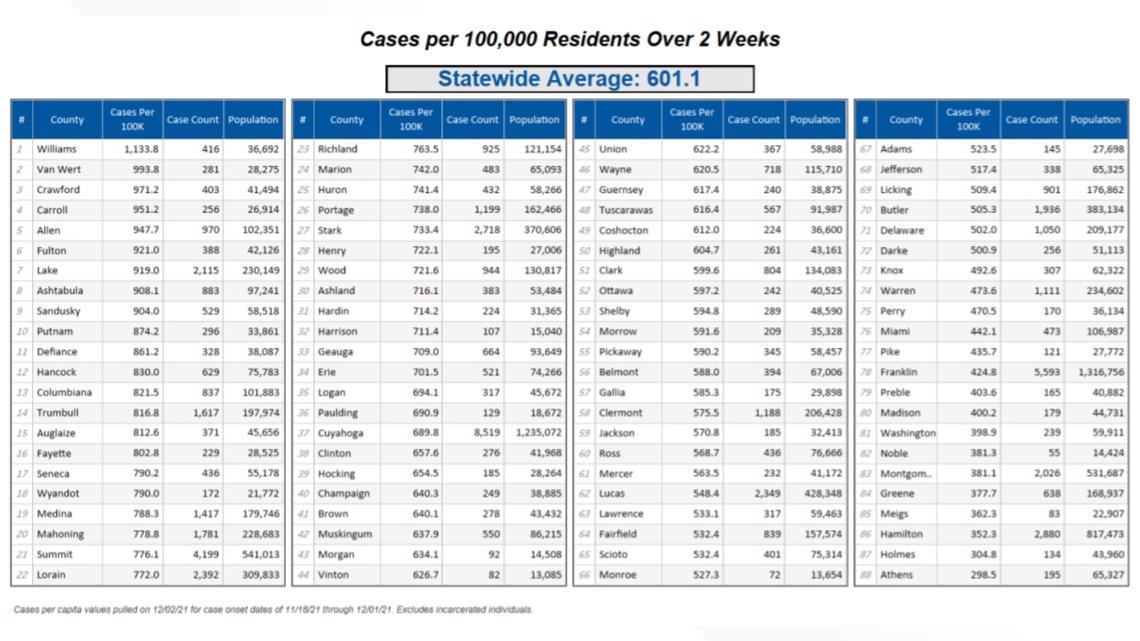
"What we try to tell the community is that anywhere you go now, there's a very high chance you're going to encounter someone who has the virus and could infect you," Williams County Health Commissioner James Watkins said.
There is a strong connection in Ohio between vaccination and COVID-19 infection rates. Ohio has one of the country's largest outbreaks, and the state is in the bottom third of the country when it comes to vaccination rates.
The full vaccination rate of 53.04% is well below the U.S. average of 59.5%, and the Ohio counties with the lowest percentages are being hit extremely hard, including the counties along the western edge of the state: Williams, Van Wert, Defiance, and Putnam. Williams' rate is 40.5%.

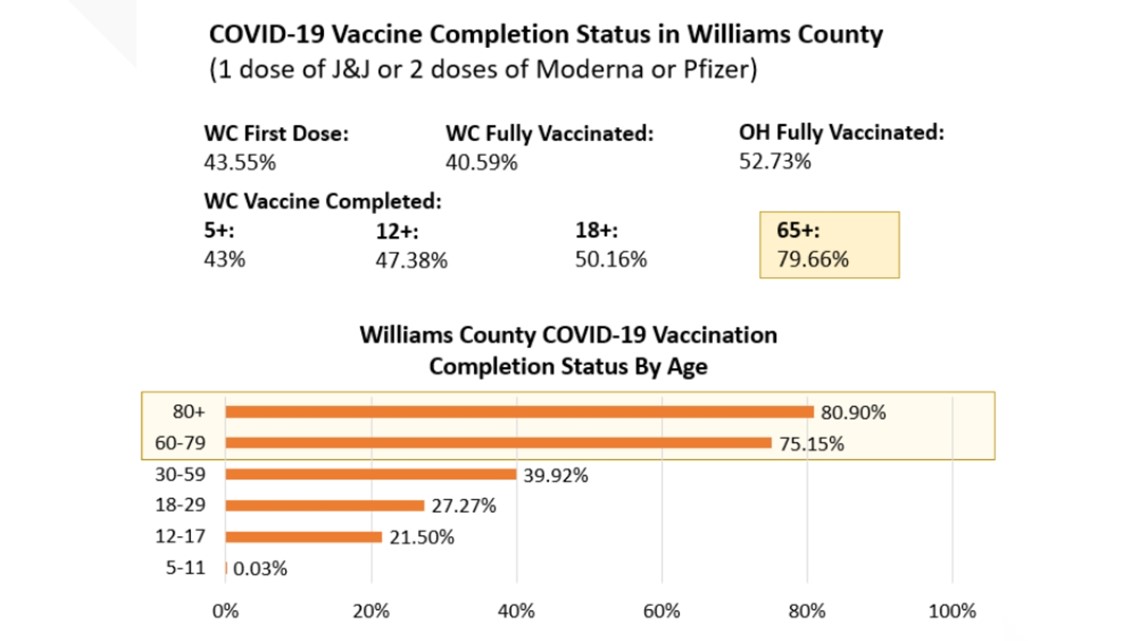
As for the reason why so few are vaccinated, Watkins believes politics is playing a role.
"We live in a divided country at this time. I don't think anybody can ignore that this particular virus happened to come along during that time period," he said. "Unfortunately, it is political for some folks and has been utilized in that way."
Two separate September polls — Kaiser Family Foundation and Gallup — about vaccine hesitancy confirmed Watkins' belief that politics do play a role in whether someone gets the vaccine. In the polls, slightly more than 90% of Democrats said they were vaccinated, but only about 57% of Republicans.
But, numbers continue to support the use of vaccines. While there are reports of more and more breakthrough infections, there has been consistent data about the vaccine still preventing serious illness. Last week in Ohio, 91% of hospitalizations and deaths were among the unvaccinated.
The virus cares little about political affiliation.

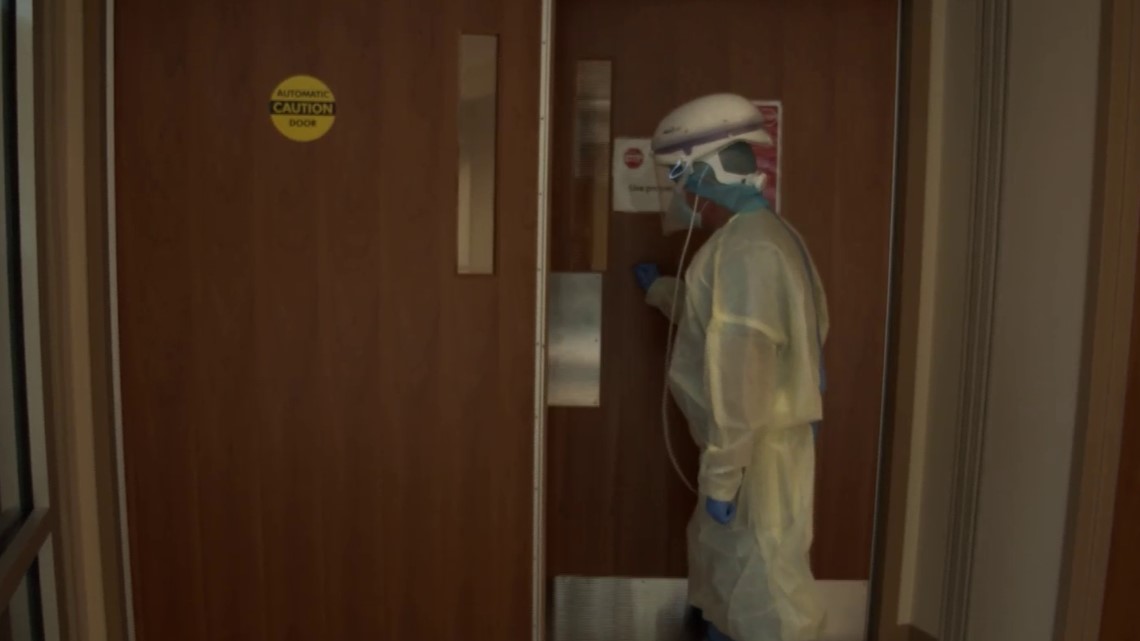
'I WORRY ABOUT MY FAMILY'S SAFETY'
Dalton Hageman takes a smoke break outside a downtown Bryan business, expressing concern about the COVID-19 surge in his county.
"I'm very concerned. I worry about my family's safety. My wife had it, and I pray to God that she doesn't get it again," he said.
When asked if he is vaccinated, he shook his head.
"I'm not against people getting vaccinated. I just chose not to get it yet. I'd rather wait until I see more studies on it and make sure it's more effective than what it is right now," he said.
According to Watkins, readily available information on the vaccine — true and false — is also playing into the reluctance of some residents to take a vaccine.
"I think that we live in a social media world today where people can put out anything, and people buy into those things while looking for answers," he said "So, they're looking for answers and there are people out there willing to give them answers. And they gravitate to whatever answer they want it to be."
RUNNING OUT OF RESOURCES
Nurses scurry through swinging doors at the Community Hospitals Wellness Centers - Bryan Hospital. They duck into a room with piles of protective gear that you might see in the movie "Outbreak."
The hospital has seen surges of COVID-19 patients throughout the pandemic. Over the summer, there were no patients and the COVID-19 unit was dismantled and hospital activity returned to normal.

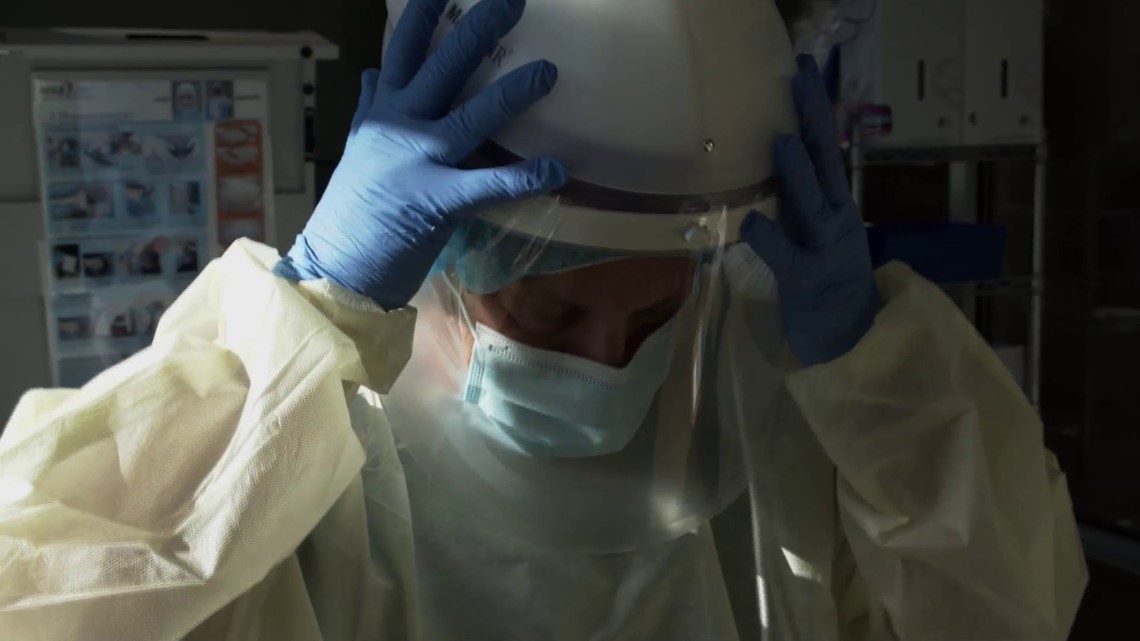
These are no longer normal times and the hospital has reached its capacity of 15 COVID patients. Two of the rooms can be divided to squeeze out space for two more patients, but all of the hospitals' ventilators are being used. A request has been made for more from the regional stockpile of ventilators.
With the growing case numbers the county is seeing, there is concern that the unit could be overrun and some patients will need to be cared for in the hallways. There are no good options.

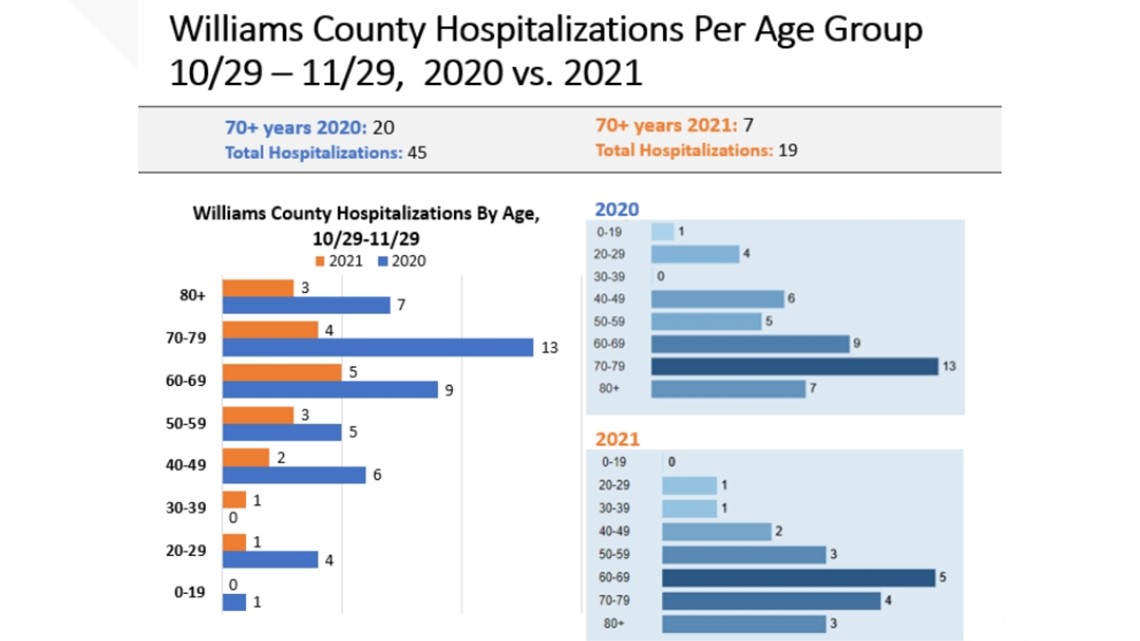


"We are trying to transfer some patients but are having limited success," CHWC CEO and President Chad Tinkel said. "In both the directions of Fort Wayne and Toledo, hospitals are in similar situations as we are — having a staffing crisis and seeing high volumes of patients."
Becky Weaver, the supervisor of ICU/Telemetry and the Cardiac Catheterization Lab at the Bryan hospitals, shuffles from behind her desk with the help of a crutch.
Not too long ago, she could be seen darting back and forth across the ICU unit. Those days are gone — for now. She was diagnosed with COVID-19 in July of 2020 and was in the hospital for a little less than 10 days. But, the virus refuses to release its grip.
"I believe I came back on Nov. 4, 2020. I came back and would work four hours a day and I could barely make it through those four hours. I'd go home and just sleep. I am here now," she said, beginning to tear up. "I was able to do things, but I can't go out on the unit."
She waved her hand and apologizes when she struggles to continue.
"I implore people to please, please, please look at the big picture. It affects more than just you. It affects individuals. It affects families," she said. "We are so busy. Our nurses are so tired. Our physicians are so tired, and the vast majority of people who are hospitalized with COVID-19 are not vaccinated."

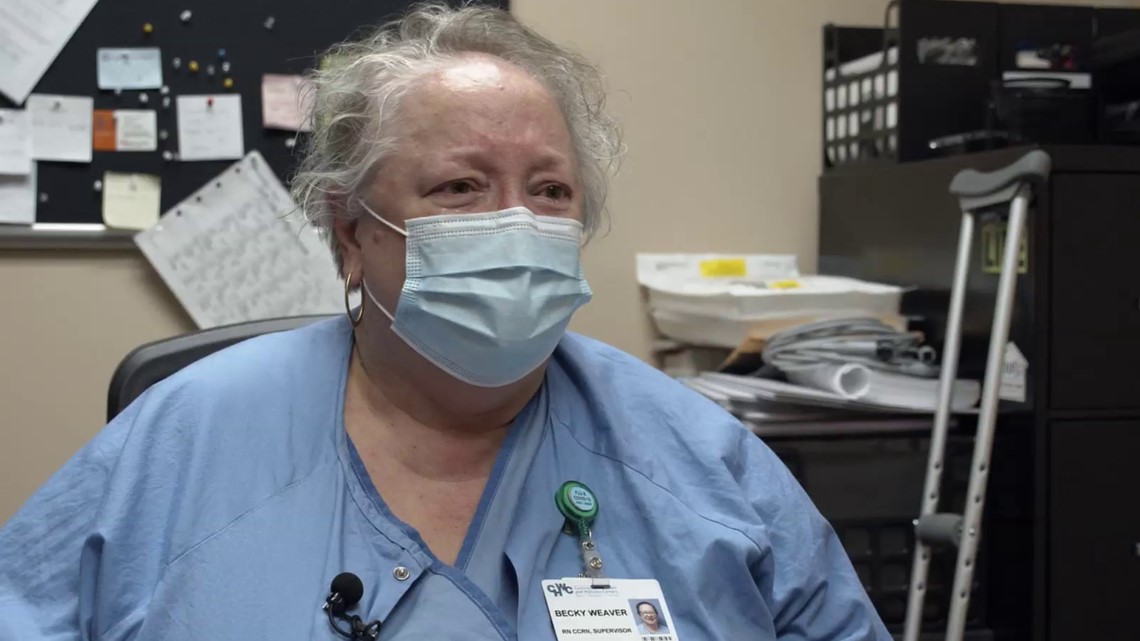
Then, she proudly stated that she is now fully vaccinated and has her booster. Others in her family, including a 15-year-old granddaughter, are also vaccinated.
A DISEASE UNLIKE ANY OTHER
Dr. Steven Bumb, a hospitalist at CHWC-Bryan Hospital, has been a doctor for more than 30 years. COVID-19 is an enemy he has never had to fight before — and hopes he never will again.
"It's an illness that's just extremely hard to treat. You're sick for a long time — three weeks on average. And, we don't have good tools or medicine for COVID once you get it. It's mainly supporting people through it with oxygen and sometimes BiPap and ventilators to get them through it," he said. "It's a long, depressing illness."
He expressed frustration that some people still don't believe in the disease.
"There was a recent patient in the hospital who did not like going to the doctor very often and did not believe in the COVID vaccine, or even that COVID was very serious," he recounted matter-of-factly. "His sister got it and she died of COVID a few weeks ago. He still would not get the vaccine. He got sick with it himself. He didn't go on a ventilator but came close and has been sick for three weeks with it. His spouse watched all of this and still didn't believe in it. She did not get vaccinated. And, now she's in the room adjoining next to him with COVID."
Multiple times throughout the day, health officials thank a reporter for telling their story. Little else has gotten through to the community.
"I think we are like a lot of communities that really didn't understand the severity, or believe the severity, of it. And, unfortunately, when you have that, people are not going to take those precautions," Watkins said, pointing out that not only will many members of the community not get vaccinated, they also are opposed to masking.
Weaver expressed gratitude that though she struggles walking, she is still intact mentally and intellectually. Many long-haulers like her suffer debilitating headaches and complain of constant brain fog. She did, however, make one final plea.
"I'm an example of what happens when you have severe COVID. I'm an example of how it affects your life," she said. "I just need everybody to please wake up and be aware of how COVID is affecting everyone's life and our community. Please, please do what you can to help."




